Berlin Music Days Wrap-Up
Last week, our editor Shawn Reynaldo made a quick trip to Berlin for Berlin Music […]
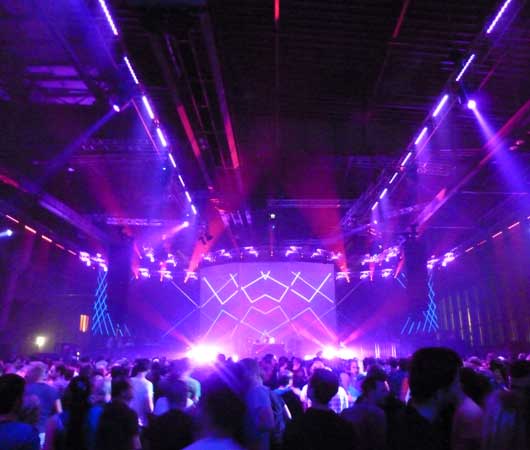
Berlin Music Days Wrap-Up
Last week, our editor Shawn Reynaldo made a quick trip to Berlin for Berlin Music […]

Last week, our editor Shawn Reynaldo made a quick trip to Berlin for Berlin Music Days, a multi-day happening capped off by the Fly Bermuda Festival. Unlike many of these journalistic expeditions, which usually involve nothing but one party after another, this trip was sponsored by the German government, which meant that the itinerary included some more “official” bits of cultural exchange. Make no mistake though—Shawn went out. A lot. Here are some of the highlights of what he saw.
Wednesday, November 2
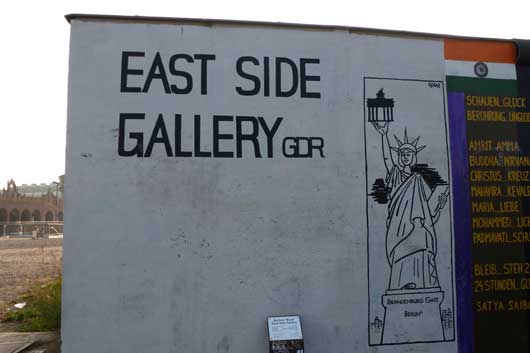
Normally, I wouldn’t bother to mention the hotel, but the Michelberger Hotel in Berlin was pretty interesting. Situated less than a block from the largest remaining portion of the Berlin Wall, the Michelberger was a pretty standard hipster boutique hotel, complete with a spacious lobby that occasionally featured DJs, but the place had some unique charms. The Big Lebowski played on a 24-hour loop on TVs in all the hotel corridors, and my room had a window between the shower and the bed. The whole place had a cool charm about it, which is probably why the lobby and bar filled up every evening with kids getting ready to party the night away.
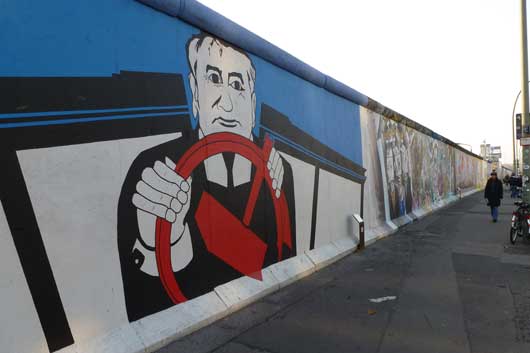
Speaking of partying, my own festivities kicked off with an opening event for Berlin Music Days at the famed Watergate. Unfortunately (for the sake of this article, not for the atmosphere of the venue), the club—like almost every club in Berlin—does not allow photography inside, so I’ll just have to explain the atmosphere. It’s sitting more or less on the bank of the Spree river, which offers some cool views out of the club’s giant windows, but overall, Watergate seemed almost a little too nice, lacking some of the gritty charm I would later find in the city’s other venues.
That charm was in abundance at Salon Zur Wilden Renate, a converted squat that locals simply refer to as Renate. The venue was quite literally one of the coolest party spaces I have ever attended, combining the feel of a haunted house with a grimy house party, only with excellent sound and a stacked DJ lineup. That night’s party featured a face off between the Life and Death and Visionquest labels, and featured sets from Dinky, Lee Curtis, Tale of Us, Nina Kraviz (who was particularly good), and several others. The sweaty mix of house, techno, disco, and more continued well into the morning hours, but I had to cut out around 6 a.m.
Thursday, November 3
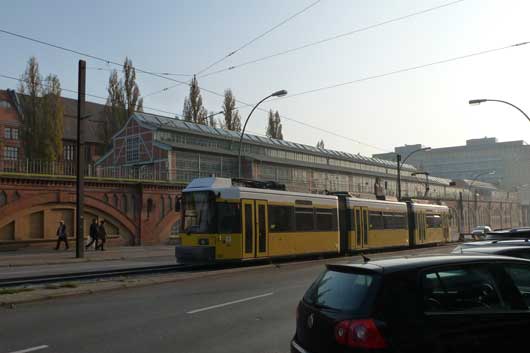
Interestingly enough, the second day’s itinerary began with a scheduled lunch at the Ministry of Foreign Affairs, which was unusual for a group of international music journalists. At the same time, it’s refreshing that in Berlin, music can be put on par in terms of importance with representatives from science or major industries (whom apparently are the usual sorts of guests invited to dine there). That was followed up by a guided tour of the city, which included several stops at former clubs and an overview of various neighborhoods. The tour’s final stop was the legendary Tresor club, which is currently located inside a gigantic, partially renovated power plant. Once again, no photos were allowed, but the venue was rather impressive with its dancefloors nestled inside dark corners of the post-industrial location.
The evening’s schedule was surprisingly light in terms of parties and club events, so much of the night was spent at KaterHolzig, the new space run by the owners of the closed Bar 25. After a fancy meal at the club’s restaurant—many of Berlin’s clubs also have their own restaurants—I headed downstairs to one of its many event spaces. KaterHolzig played host to many of Berlin Music Days’ workshops and other daytime exhibitions, and early in the evening they staged a special presentation where six vintage analog synthesizers were linked together and “played” in a fashion where a few button pushes quickly bloomed into entire compositions. Although the concept ultimately proved more compelling than the sounds being produced, it was nonetheless an interesting spectacle.
Friday, November 4
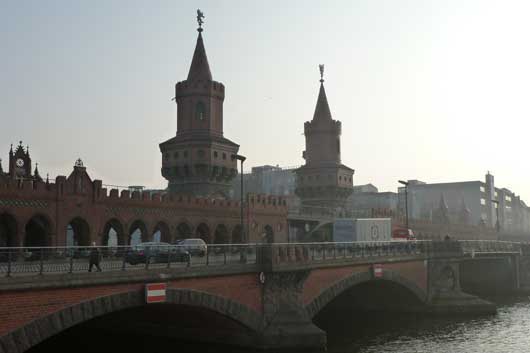
After a morning meeting with representatives of both Germany’s and Berlin’s music industry (I’m not kidding), I headed over to Berghain for lunch. (Yes, Berghain has a restaurant too.) Attended by a variety of Berlin artists and representatives from local labels, the highlight was a talk/slideshow presented by Gudrun Gut, who gave us an overview of her 30 years of pushing musical boundaries in Berlin. Beginning with her days as a post-punk experimentalist, she traced the path to the eventual founding of her Monika Enterprise label and outlined her various electronic exploits, both under her own name and as part of the Oceanclub collective.
Later that evening, I returned to Berghain, which truly lived up to its reputation as perhaps the greatest techno club on the planet. The reputation about its door policy also proved correct, as I witnessed large numbers of willing clubbers being turned away after waiting literally hours in the cold. Adding to the incredible nature of the situation was that much of the Berghain door staff look like villains from a James Bond film. They quite literally run the club the way they want to run it, and don’t seem to give a fuck whether you like it or not.
Granted, once I entered the club, it was hard to argue with the results. Also situated inside a converted power plant, the club is inordinately spacious, with vaulted ceilings and a minimal, concrete- and steel-dominated aesthetic. The sound system is perhaps even more impressive, a massive Funktion One system that was being occupied that evening by a Raster-Noton showcase. When I came in, Germany’s Alva Noto was dropping a harsh-but-throughly enjoyable set of glitched-out techno, much to the delight of the packed dancefloor. Another highlight of the evening was a DJ set from Mute Records founder Daniel Miller, who proved capable of delivering a pounding set of hard techno, even at 60 years of age. Upstairs in Panoramabar, the dancefloor had a decidedly different and pleasantly upbeat vibe, thanks to the Perlon showcase staffed by DJs Zip, Sammy Dee, and Keith Denis.
Saturday, November 5
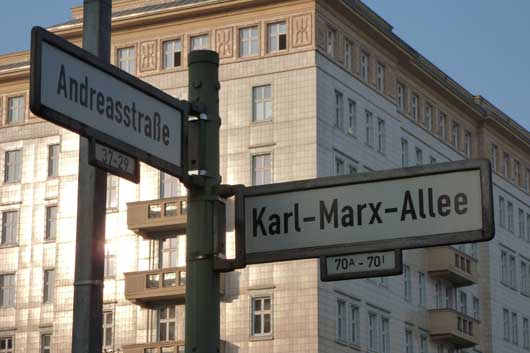
The final day of Berlin Music Days was punctuated by the week’s showcase event, the Fly Bermuda Festival. Although the festival featured an incredibly star-studded lineup, perhaps the highlight of the entire affair was the location, as the party was held at the city’s historic (and now-closed) Tempelhof Airport, inside a few of the hangars.
Spread over three stages, the lineups included techno heavyweights such as Ricardo Villalobos, Richie Hawtin (performing as Plastikman), Magda, Ellen Allien, M.A.N.D.Y., and others, along with an audience of 10,000-plus people. The spectacle was certainly impressive, although, like any festival, Fly Bermuda had its share of ups and downs.
Lexy & K-Paul were winding down their set on the main stage when I arrived at Tempelhof, and the fact that the German duo was spinning a tune that liberally sampled the Rocky theme made me glad that things were coming to an end.
Tiefschwarz
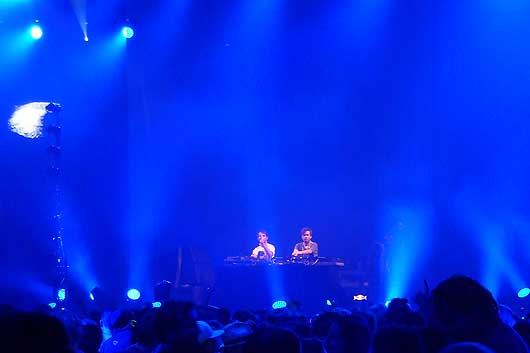
Over in Hangar Two, Tiefschwarz was playing to a packed dancefloor and eliciting lots of cheers from the thousands of people getting down. Unfortunately though, the German duo’s selection wasn’t particularly exciting, as the pair threw on a series of bland tech-house tracks and frequently resorted to tactics like periodically cutting the bass and bringing it back in for dramatic effect. The crowd ate it up, but it wasn’t particularly inspiring, which sent me running for the safe confines of the smaller Beatport stage.
J. Phlip opened up the Beatport stage, and the Dirtybird selector put together an interesting brew of bass-heavy house sounds.
J. Phlip
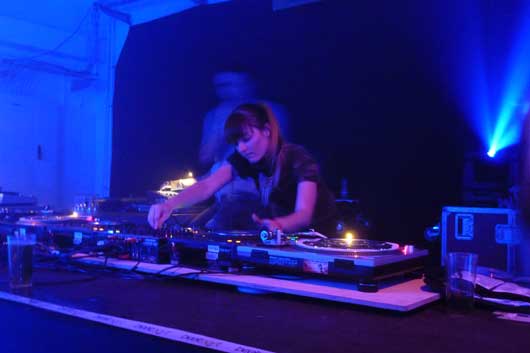
George FitzGerald
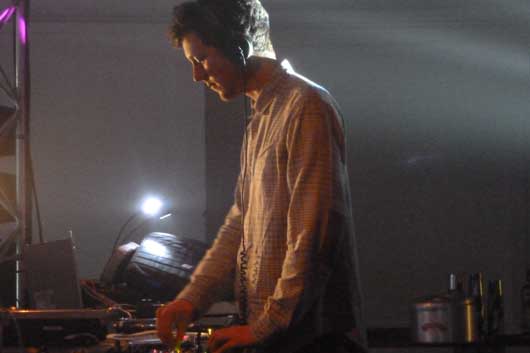
Even better was UK artist George FitzGerald, who seems to have taken the melodic, garage-tinged house mantle from Joy Orbison, to whom he’s frequently compared. His set featured lots of drawn-out synth melodies and nuanced details, along with what sounded like a heavy dose of his own productions.
Another UK producer, Sigha, followed and took things even deeper. Perhaps because he was playing vinyl, the room’s volume took a noticeable dip, as did the energy of the music. Sigha’s selections were unobjectionble, but perhaps a bit too deep and dark for a festival crowd, which prompted me to head back out to the larger hangars in search of other sounds.
Sigha
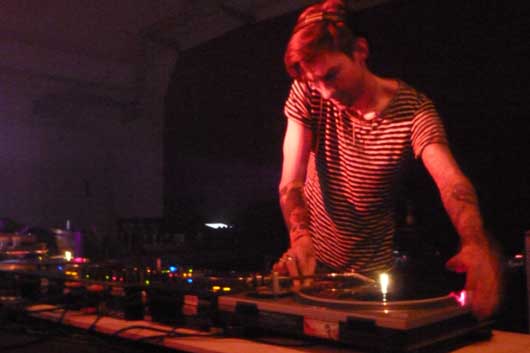
James Holden (pictured in the top image) performed on the main stage, and offered his usual mix of melodically rich and sonically layered tunes. Meanwhile, back in Hangar Two, French trio dOP was performing live and enlivening the crowd with its goofball antics and fun-loving take on house music. Although the frontman’s on-stage posturing and shirtless attire at times brought back memories of assorted nu-metal bros, the Fly Bermuda audience really took to the vibe, and the group’s live drummer and guitar player offered a nice change of pace from the lineup’s usual “dude with a laptop and a big light show” presentation.
dOP
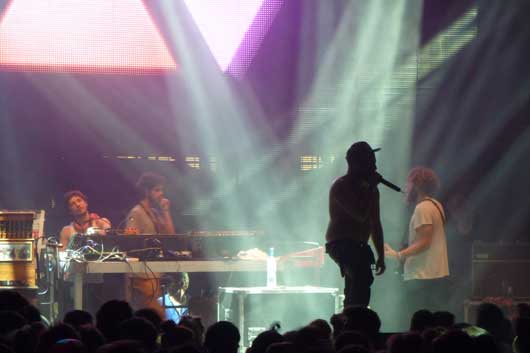
As festivals go, Fly Bermuda was better than most. The sound was solid (especially considering the giant space), the lighting arrays offered visual stimulation without being totally cliché, and there was plenty of room to dance and move around the venue. Nevertheless, a big festival is still a festival, which meant plenty of suburbanites and people simply looking to party, and fewer hardcore music fans in attendance. In a city which prides itself on its love of electronic music, I knew that better parties would be happening elsewhere, and took my exit around 2 a.m.
My next stop was another Berlin Music Days-affiliated party, a showcase for Modeselektor‘s increasingly active 50Weapons imprint. Although the label bosses were not on the bill, UK trio Dark Sky was in the midst of a four-and-a-half-hour set when I walked in. The party took place at Horst Krzbrg, another quality room that featured little more than a banging soundsystem, a dark dancefloor, and a refreshingly no-frills environment.
Dark Sky drifted toward the harder end of the bass-music spectrum, dropping in lots of hard-hitting drums along with bits of grime and garage. Even darker was Anstam, who performed live and was celebrating the release of the new Dispel Dances album. Around 4 a.m., another German artist, Phon.o, got behind the decks and reinvigorated the party with some more dance-friendly and house-oriented tunes.
At that point, I cut out to make the final stop of the trip, a party at About Blank, where Doc Daneeka and Mano Le Tough—both of whom currently reside in Berlin—were playing at the same time in two different rooms. About Blank was another converted space of some kind, with an unusual railroad layout and a giant backyard. Doc Daneeka went heavy on the UK-leaning house tunes, with plenty of the percussion-heavy selections that he’s known for. As for Mano Le Tough, although his recent productions have been somewhat subdued, his DJ set definitely kept the party rolling and surveyed a myriad of house and techno sounds. At 6 a.m., Appleblim took over for Doc Daneeka, and surprisingly did not get deep into the Bristol-centric, low-end-heavy sounds he’s known for, instead going for some much dancier fare. He definitely kept the party rolling, but I had to leave halfway through and head to the airport. It certainly wasn’t a bad way to end the trip.

